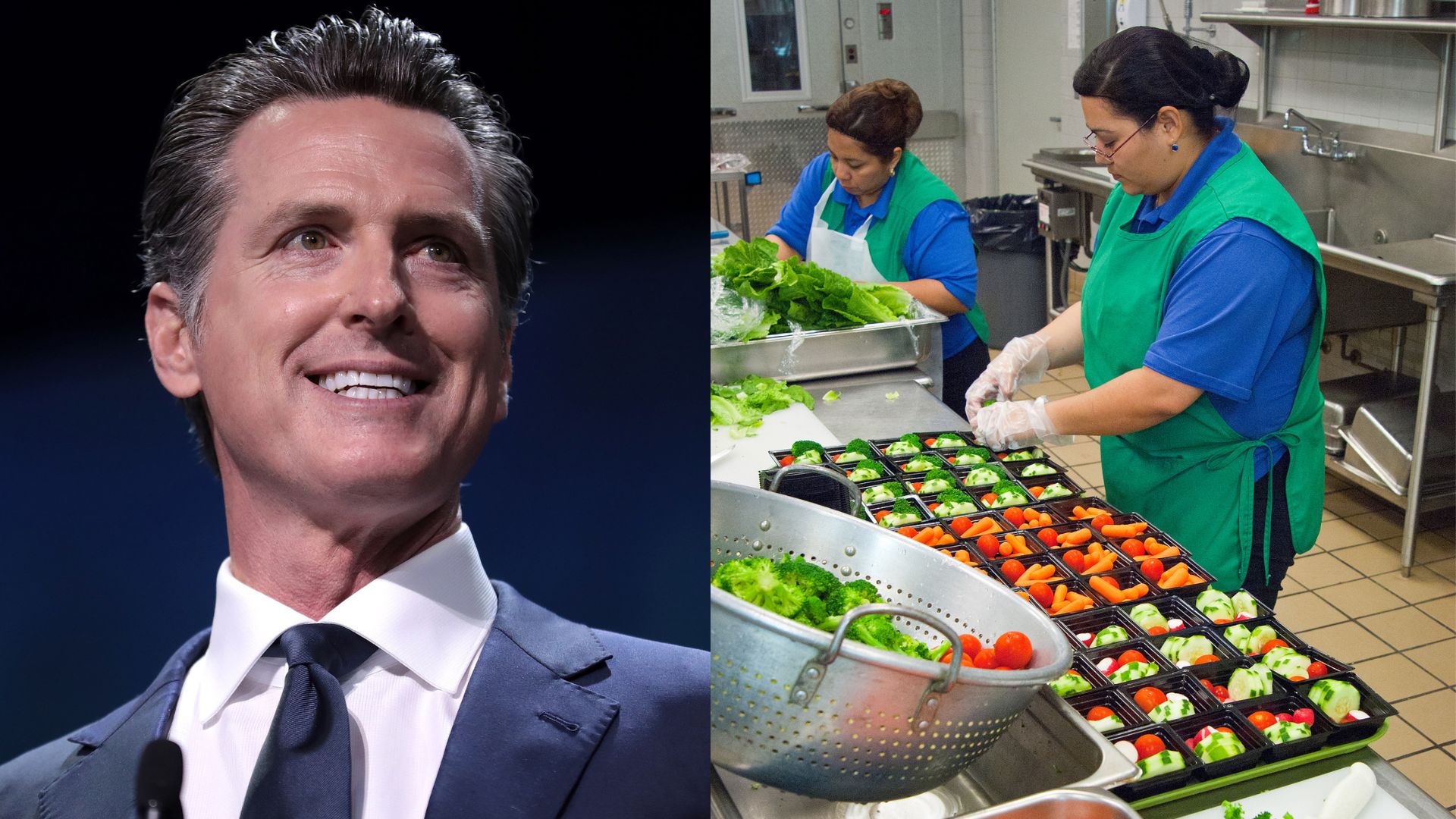Schools in California are in the midst of a crisis due to Gavin Newsom’s new law requiring fast-food workers to be paid at least $20 an hour. This has led to former school cafeteria workers opting to join fast-food restaurants in an attempt to receive a better wage due to the high cost of living in the state.
Newsome signed the new law into power at the end of September last year, and it officially went live on April 1st. Workers at fast-food giants across the Golden State are now guaranteed 20$ per hour. However, the new law doesn’t apply to those who work in the school food service. Now, many former school cafeteria workers are being forced to apply to work at fast-food restaurants such as McDonald’s and Pizza Hut in an attempt to receive a pay increase, leaving many schools without kitchen staff.
Cafeteria shortages are relatively common across the U.S. A recent report for the School Nutrition Association revealed that most surveyed districts were facing “significant challenges” when it came to staffing cafeterias. “There’s a shortage every day because it doesn’t pay well,” says Roxanne Beissel, who earns $15 an hour cooking in Hastings, Minnesota, schools. The combination of high stress and low wages, cook Roxanne Beissel explains, “is definitely not appealing to a lot of people.”
A separate report from the California School Nutrition Association and the Chef Ann Foundation revealed many schools were already struggling to recruit long-term employees and retain staff due to the low wages. With the new $20 minimum for fast-food workers, schools are experiencing a severe lack of applicants for cafeteria workers. Unfortunately, this only leads to suffering on the children’s behalf, as the report points out that “persistent staffing issues” lead to the use of pre-packaged food and longer lines for lunch, with students sometimes missing meals.
Mary Dotsey, a food service specialist in Indian River County public schools in Florida, told Jacobin, “When we’re short-staffed, that means not all the food is getting cooked. So we’re running out by third lunch and scrambling.” While it is apparent schools have always struggled with staffing issues in their cafeterias, now these problems have intensified.“They are all very worried about it. Most are saying they anticipate it will be harder and harder to hire employees,” said Carrie Bogdanovich, president of the California School Nutrition Association.
As a result of the staffing crisis at hand, various school districts in California have tried to raise wages for members of their cafeteria staff. The Sacramento Unified School District has already implemented a 10% pay rise last year, and plans an additional 6% increase, aiming to match fast food industry wages. “We are looking not only at competing with districts and comparing with districts, but we’re also looking at fast food places,” said Cancy McArn, the district’s chief human resources officer, to AP concerning the district’s efforts to keep pace with the evolving job market.



















